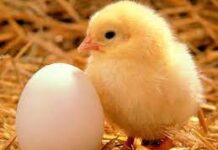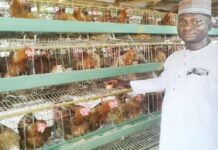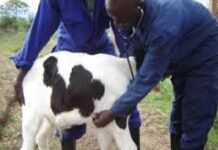Certain horse breeds have an inborn ability to separate a cow from a herd, a trait that makes them a valuable partner on a farm, says Dr Mac.
Arabians and American Quarter Horses have the agility and skill to be used for cutting cattle out of a herd. The practice is as fascinating to watch as a Border collie working sheep.
The American Quarter Horse Association describes cutting as a “battle of wills between a horse and a cow”.
Cutting horse competitions are held mainly in Canada and the US, where horses remain an important part of large-scale extensive beef production.
At shows, ranch-bred steers are brought in to be worked by cutting horses. Each rider is judged in turn and has to work within strict time limits.
The rider moves the horse quietly into the herd, and as the cattle part to let the horse through, one steer is deftly herded out into the middle of the arena.
Being a herd animal, the steer dodges away from the horse in an attempt to rejoin its comrades.
The horse follows and slides to a stop as the steer stops, then turns and follows it in the opposite direction.
Turns are so fast that the rider often has to hang onto the saddle horn to avoid being swung off.
During a cutting competition, judges score a run when two or more cattle are cut from the herd.
The run lasts between three and five minutes. As with many western classes, the score comes to between 60 and 80, with the judges adding or subtracting points from the standard of 70.
Points are subtracted if the rider jerks the reins, if a foot is placed against the horse’s shoulder, if the cattle are scattered, or if the horse bites or paws at a cow. Riders considered to be mistreating either horse or cattle are disqualified.
Perfecting skills
The three movements that need to be honed to perfection are the stop, draw and turn.
As the cow accelerates, the horse follows, sliding to a stop in a cloud of dust when the cow stops. The rider encourages the stop by sitting deep and reducing leg pressure.
Once the horse has stopped, it then pulls its weight back onto its hocks (the ‘draw’), and swings into a rapid turn at the same time as the steer turns. The rider does not turn a good cutting horse; it turns itself to follow the steer.
The horse concentrates completely on the steer. As the steer takes off, the horse gallops parallel to it, overtaking it until it reaches the head. This makes the steer stop, hesitate and turn again.
Once the steer loses interest in the game, the rider returns to the herd to cut another.
On the farm
Cattle farmers who own cutting horses use them to help separate calves at weaning time, sort cattle, or move injured or diseased animals out of the herd.
They are also useful for moving large groups of cattle from one location to another while preventing weaners from dodging out to the side.




